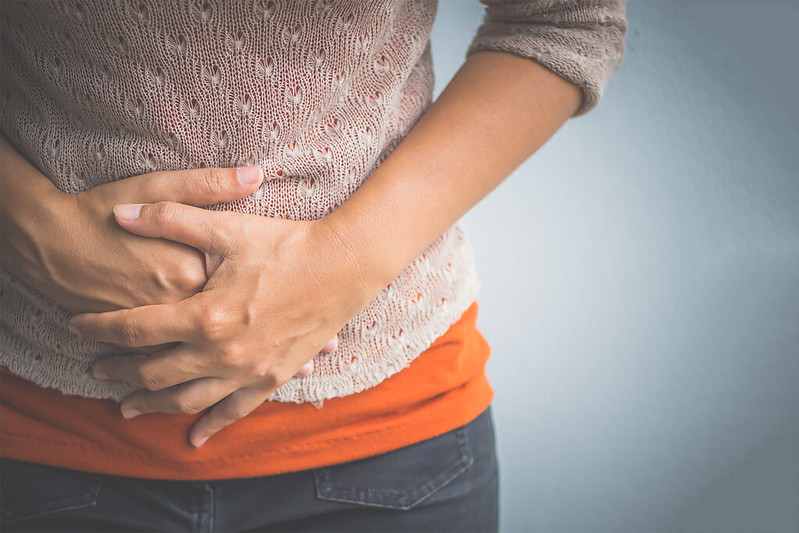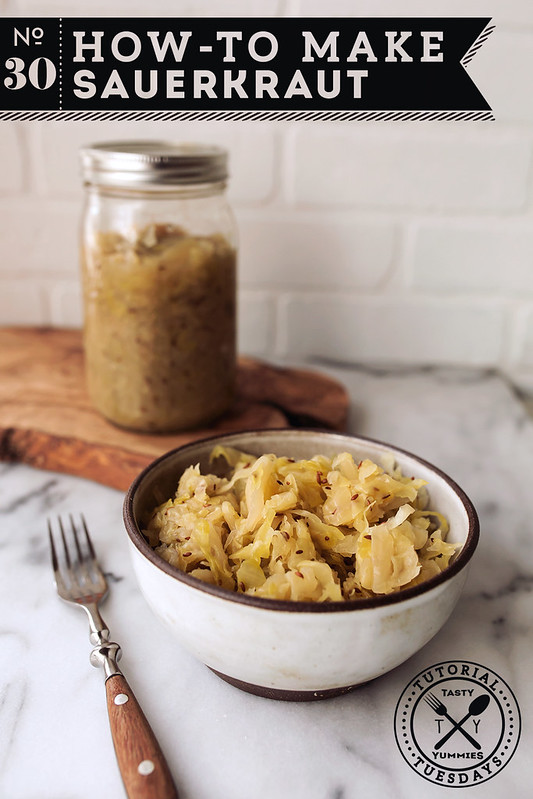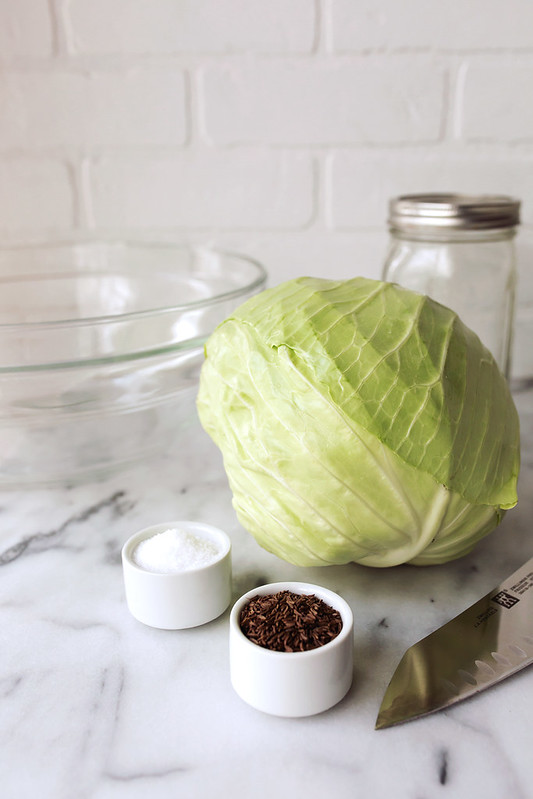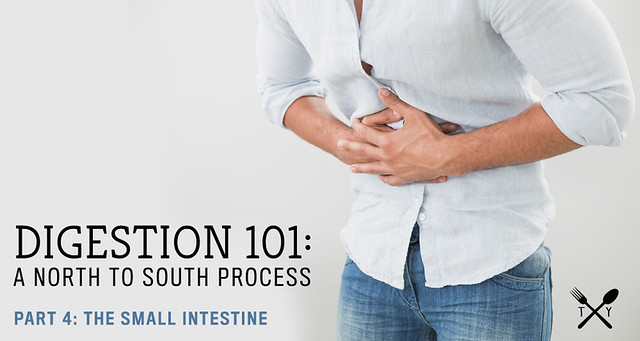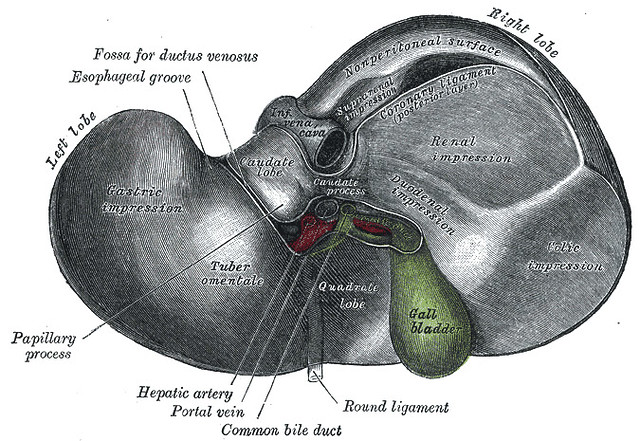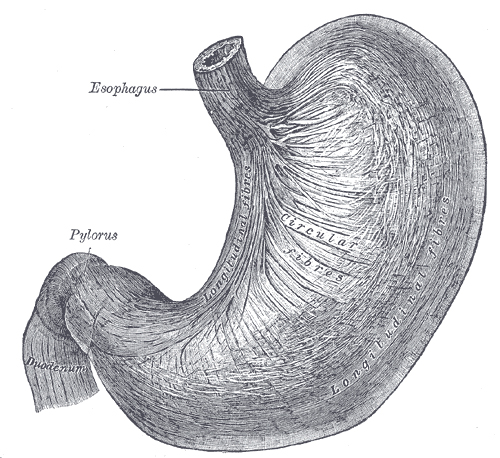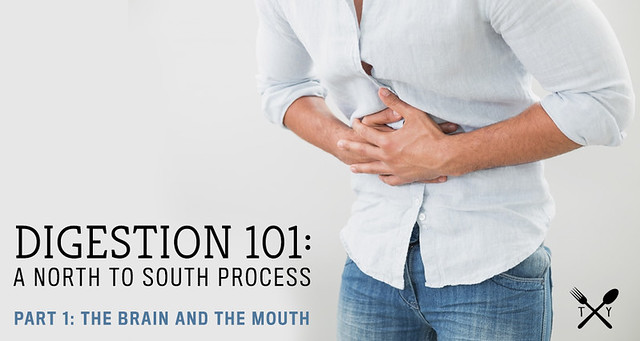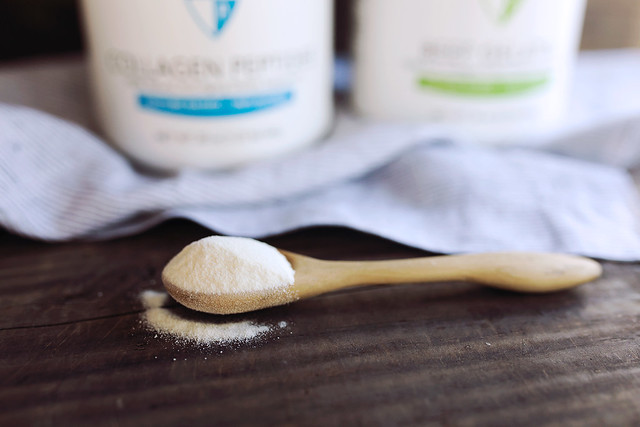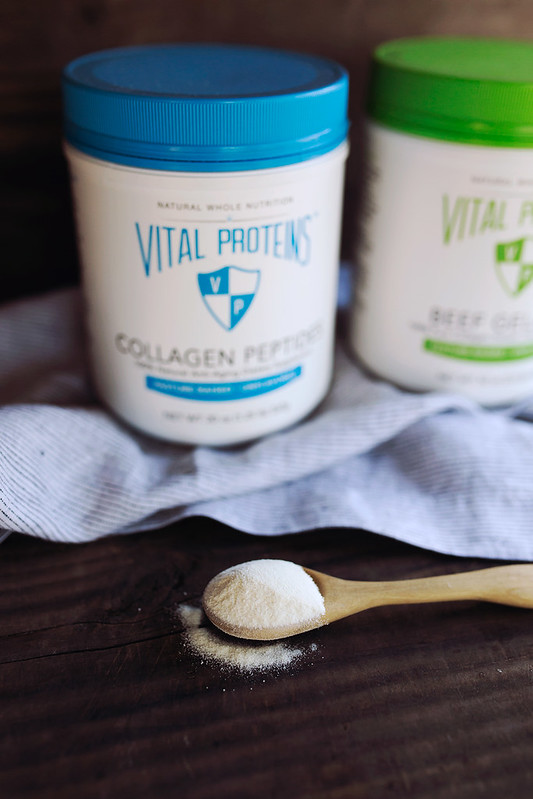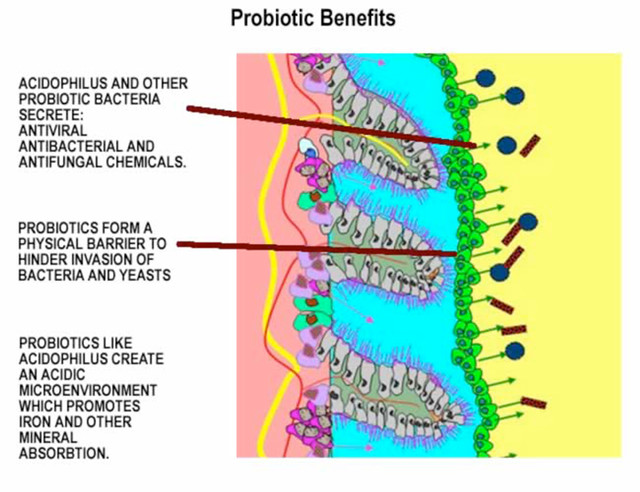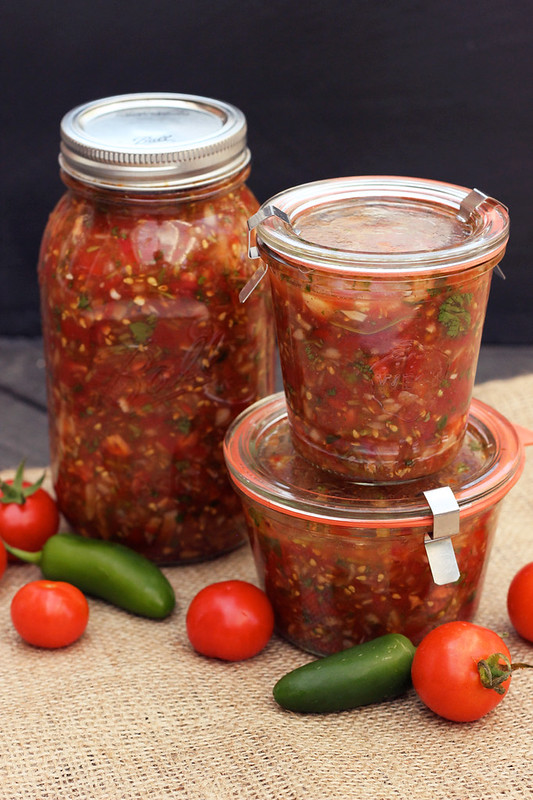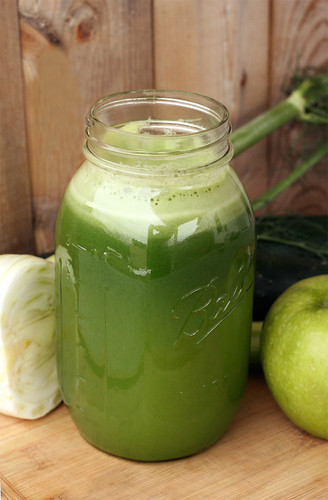-
Five Tips for Mindful Eating and Why it Matters {+ Video}
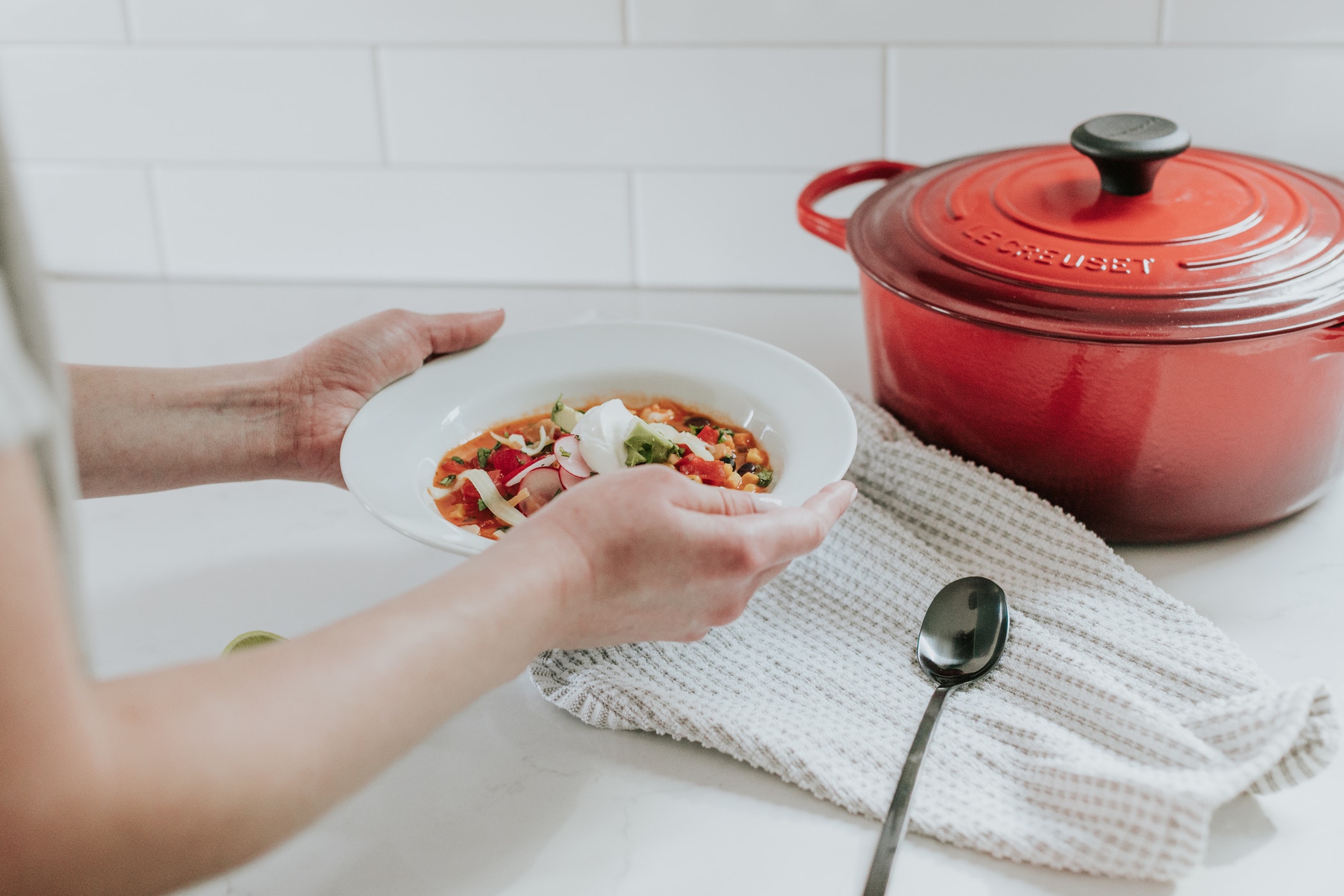
Mindfulness isn’t just yoga and meditation, burning sage and sitting on a meditation cushion chanting ‘OM’. Mindfulness can extend into all aspects of our lives with just a little conscious awareness and minimal effort. Mindfulness is derivative of a “monastic” practice, meaning it was originally made for monks. It utilizes deliberate focus to increase your consciousness and appreciation of the present moment.
One of my favorite methods for incorporating mindfulness with my clients is to do so at mealtime. When we aren’t totally present at meal time, if we aren’t eating mindfully, it can be a disaster for our digestion, for our stress levels, for our moods and many times we can end up accidentally overeating. Often the opposite of eating mindfully is eating mindlessly, and we all know how that goes for us.
The practice of mindful eating is all about learning to pay attention. It can be a form of meditation, almost. Instead of mindlessly shoveling food into your mouth almost unconsciously, not even tasting the food you’re eating, I want to teach you how to slow down and savor your meals. With mindful eating we take the time to pause, to notice thoughts, feelings, and sensations surrounding our meals and to truly taste each bite. I have found this practice be vital to eating intuitively and finding a lifestyle that is appropriate for the individual.
Not only will this make meals more pleasurable and delightful to ALL our senses, but it’s also better for our digestion and it keeps us from overeating.
When our body is in a chronic state of stress, our nervous system will actually shut down our digestion system, as a protection mechanism. This is why one of my all time favorite tips for folks deal with digestive issues to take a look at the stress in their life and even more specifically the stress around meal times.
As well, when we are stressed or not paying attention it’s hard to truly understand and realize the need to stop when we are satisfied, we cannot do any of this if we are on autopilot, shoveling food into our faces.
As far as I am concerned, if you’re not truly tasting and enjoying your food – that’s a problem. How can you ever expect to be able to listen to your body’s subtle cues, to tap into your intuition and
Mindful eating is not a quick fix, but very often it is a very valuable solution, of course it’s also FREE and like most important things in life, it takes practice.
Before we get into the mindful eating tips, I wanted to very quickly explain some of the important things you NEED to know about digestion and why mindful eating can help.
-
The Benefits of Probiotics and How To Choose
The Benefits of Probiotics and How To Choose – When it comes to gut health, probiotics will forever be a hot topic, and with good reason. The right probiotics can help to nourish and support your gut bacteria.* The word probiotic actually means “for life” because these live microbial organisms provide both physical and mental health benefits, and experts have well researched the direct and indirect effects on the physiology of the body.
This post and video are sponsored by MegaFood®
Why a Healthy Gut Matters.
A healthy gut is paramount to a healthy body.* Our health begins in the gut! A large majority of the important cells, responsible for the regulation and efficacy of our immune system can be found in our gut 1https://www.ncbi.nlm.nih.gov/pmc/articles/PMC2515351/ (some research estimates between possibly as much 60 and 80% of our immune cells can be found there)2https://www.physiology.org/doi/full/10.1152/ajpgi.1999.277.5.G922. Additionally, many of the chemicals responsible for regulating moods, neurotransmitters such as serotonin, are actually made in our gut 3https://www.ncbi.nlm.nih.gov/pmc/articles/PMC5772764/. Some estimate that as much as 90% of the body’s serotonin, which influences both mood and GI activity, is produced by the gut bacteria in the digestive tract. From a properly functioning digestive system to maintaining a strong immune system and well functioning brain – our gut is the foundation of our vitality.*
Not only is it important to ensure our digestion is functioning properly so we can feel our very best, but healthy digestive function is also crucial as it allows us to be able to absorb and utilize all the amazing nutrients we consume in our nutrient-dense, whole foods focused diet.
Poor eating habits, stress, and antibiotic use can all throw off the balance of our gut microbiome. When you experience occasional digestive issues like gas, bloating, diarrhea, or constipation, you may need some extra digestive health support. To maintain optimal gut health, we want to strive for a symbiotic GI tract full of beneficial bacteria.
The Benefits of Probiotics // How Probiotics Can Help
When you take probiotics you are re-introducing good bacteria to your gut environment by populating your GI tract with as much of the beneficial stuff as possible. Studies have shown that probiotics may prevent adhesion and interaction of unwanted bacteria with our gut epithelial cells.* 4Gerritsen, J. et al., Intestinal microbiota in human health and disease: the impact of probiotics, Genes Nutr. 2011 August; 6(3): 209–240 Some research has also shown that administration of probiotics can have a direct effect on the tight junctions between enterocytes in the gut—resulting in decreased intestinal permeability 5Corridoni D, et al., Probiotic bacteria regulate intestinal epithelial permeability in experimental ileitis by a TNF-dependent mechanism, PLoS One. 2012;7(7):e42067. These are just some of the ways probiotics may help to restore gut health.*
Probiotics are present in unpasteurized fermented foods but you can also ingest them through supplementation. So how can we be sure which is the right method, how much and how often we should take probiotics and why should we want to?
One very important thing to note here is that for probiotics to do their job effectively, you must have optimal conditions for “good” bacteria to live and flourish. This starts with nourishing your microbiome with nutrient-dense real food and eliminating foods (temporarily or permanently) that can cause inflammation and microbiome imbalance.
References
1. ↑ https://www.ncbi.nlm.nih.gov/pmc/articles/PMC2515351/ 2. ↑ https://www.physiology.org/doi/full/10.1152/ajpgi.1999.277.5.G922 3. ↑ https://www.ncbi.nlm.nih.gov/pmc/articles/PMC5772764/ 4. ↑ Gerritsen, J. et al., Intestinal microbiota in human health and disease: the impact of probiotics, Genes Nutr. 2011 August; 6(3): 209–240 5. ↑ Corridoni D, et al., Probiotic bacteria regulate intestinal epithelial permeability in experimental ileitis by a TNF-dependent mechanism, PLoS One. 2012;7(7):e42067 -
How I Treat a Gut Flare Up / My Gut Healing Go-tos
A few weeks back I was in the thick of a pretty annoying gut flare up. Bloating, gas and excruciating stomach aches with nearly every meal, the whole nine! For those of you that follow me there, I shared a bit on Instagram about what I was dealing with and also used this as an opportunity to remind you that even us “experts”, the nutritionists, health coaches and others working to help people in their health journeys – we aren’t immune to these kinds of set backs.
With the amount of questions and interest those posts created, I pulled together an email and sent it out to the Tasty Yummies list, sharing my personal gut healing approaches when I deal with an acute gut flare up. Because it was so well received and many of you mentioned how helpful this information was for you, I wanted to compile it into a permanent post here on the website, that would be much easier for you to reference, whenever you need it.
Healing Isn’t Linear and It’s Often Not Pretty.
Before we get into my personal gut-healing tips, I want to remind you that that your health and your wellness is not a linear journey, it’s not black and white and often it’s not too pretty, either. Healthy isn’t a destination! It isn’t a level you achieve, a peak you reach, that you only ever move forward and onward from. Things happen and this journey is ever-evolving. But, something tells me, many of you already know that.
Unfortunately, the set backs and the flare-ups happen, this is all part of the journey and for many of us, especially those of us who struggle with autoimmune issues, oftentimes it feels somewhat inevitable. But, I also try to stop in these moments and remind myself this is why I have worked so, so hard to prioritize my health, to listen to my body and to continuously educate myself – because as these setbacks emerge, I am now armed with an arsenal of tools to go into battle with and I find I bounce back far quicker than I ever have before.
In the event that you missed the conversation in my Instagram stories that week (you can catch a pulled together replay version of it here) – in a nutshell I was speaking about exactly all of this, so I won’t repeat myself too much. The feedback from you all was beyond amazing, though and hearing your own personal stories and struggles, it truly touched me! So thank you – for showing up, for sharing and being vulnerable in return.
As you may have seen in those stories, I mentioned that at the time, I was personally in the middle of a gut flare up, nothing crazy major, not a full on autoimmune crisis – but my gut was pretty dang angry. Could have been related to the episode where I got “food poisoning” in Mexico back in April or it could be a response to new supplements I had introduced or a reaction to a new food. Not too sure the cause or origin of the flare up, but, what I do know is that I have the knowledge and I am empowered to take control and implement the various gut soothing and healing approaches, to calm these flare ups as they happen.
And as a reminder to all of you, even those of us that are “wellness experts”, nutritionists, health coaches, etc, it can happen for us, too. We aren’t immune nor are we perfect – we don’t have it all 100% fully figured out, either.
Customized Wellness. Personalized Nutrition.
You’ll notice, I am not selling or sharing any of this as a protocol, a diet or a reset. Some of this looks like the autoimmune protocol, other parts look like a low-FODMAP or the SCD approach, some reminiscent of GAPS. This is because with WELL over 13 years of gut-healing under my belt, with experimenting, experiencing, trial and error – I now have a bit of a personalized gut healing tool kit that is customized just for me. This is why I am SO BIG on this idea of honoring your individuality, because there is NO ONE catch-all remedy for everyone and anyone that tries to tell you or sell you otherwise – is lying to you. Especially when it comes to the gut, my gosh there are a slew of factors to consider when it comes to gut health.
That said, below is some of what works for me, for gut healing and soothing. I share not because I believe if you are struggling that you should do exactly this and you will find relief, but more I want to inspire you to feel in control, in charge and to feel open to experimenting with your own approaches, so you too can create your own tool belt that you can use whenever necessary.
-
Happy Hormones: The Importance of Digestion to Hormone Balance
This is the third Happy Hormones post in our Hormone-Focused Series from Nutritional Therapy Practitioner Brynn D’Avello. I suggest reading the first post The First Step to Happy Hormones and then the second post where we tackle how Blood Sugar Imbalance Affects Your Hormones before you dive into this post covering the Importance of Digestion to Hormone Balance.
As we discussed in the previous post in this series, as important and crucial as blood sugar regulation is to hormone balance in this latest installment we will discuss how digestion is a very, very close second. Since I know Beth has done a killer job breaking down the digestive process in her Digestion 101 series I am only going to touch on the highlights…. with a very special emphasis on the liver.
Digestion is a North-to-South Process, and to help strengthen it effectively we must naturally start at the top and work our way down. Most of us would assume that the first step to digestion is in the mouth, but you actually have to go a little bit higher than that. The brain. To activate salivary enzymes your brain must be engaged. That’s why your mouth waters when you smell something delicious. It’s getting the signal that food is coming its way, and saliva, in addition to chewing thoroughly, helps start the breakdown of food into useable nutrients. (You can read more here about the roles that our brain and mouth play in digestion) Once our food gets to the stomach, gastric juices go to work on proteins and then it gets passed on to the small intestine. Here is where the gallbladder kicks in. Bile is secreted to emulsify the fats in our food to assimilate the necessary elements, to be used effectively. Without good quality bile, fats are not digested properly. Fats are absolutely critical to the entire endocrine system. Our body cannot produce hormones without fats.
-
5 Mealtime Tips to Improve Digestion
Digestive dysfunction is easily the most common chronic ailment I encounter working as a Nutritional Therapist. As a follow-up to my in-depth series Digestion 101, I wanted to offer five, simple actionable steps that you can take right away to immediately begin the improvement of your digestion.Digestive dysfunction can have many faces – gas, bloating, stomach aches, indigestion – we’ve all been there. Yes, there are plenty of quick-fix, short term “bandaid” approaches to managing the symptoms, I see so many people that often pop antacids, take anti-gas, diarrhea or constipation meds just to get through the day. Sadly this only manages the symptoms of a larger problem and more often than not the root cause of the dysfunction is left untreated and the problems still persist.
Rather than popping pills or difficult, unnatural approaches, here are 5 simple, meal-time tips to improve your digestion, naturally.
5 Mealtime Tips to Improve Digestion
-
Digestion 101: A North to South Process // Part 5: The Large Intestine
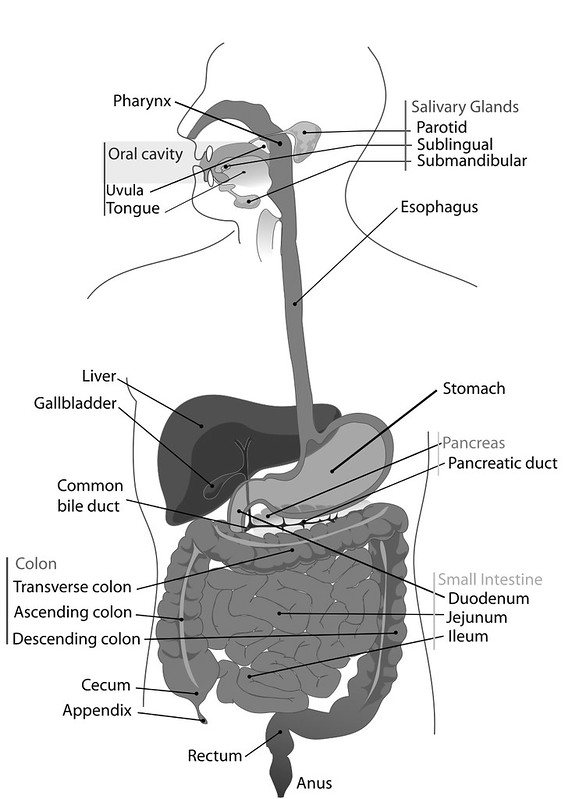
Digestion 101: A North to South Process
Here we are, at the end of the road. The large intestine is the final step in the process of digestion. By this point you probably more than understand the concept of digestion being a north to south process. We have talked about it at length starting first the brain and the mouth, and the importance of being in a parasympathetic state and properly chewing your foods, then of course the stomach and the dire need for proper hydrochloric acid production, how the accessory organs, the pancreas, liver and gallbladder continue the process of digestion, releasing bile, enzymes, various hormones and allowing the small intestines to finish digestion but more importantly do it’s very important job of assimilating nutrients and finally last but not least, the large intestine.
See Part One: The Brain and The Mouth
See Part Three: The Accessory Organs: Pancreas, Gallbladder and Liver
See Part Four: The Small Intestine
How it Should Work
The large intestine, or the bowel, is compromised of 3 sections, the cecum, colon and the rectum. The leftover chyme from the small intestines, passes through the illeocecal valve and first into the ascending colon. At this point in a healthy digestive system, what is left as chyme (the digested food) after the small intestines, is indigestible fibers, lots of water, sloughed off cells and bile. The large intestine is all about absorption and recycling.
As in the esophagus and the small intestine, the contents of the large intestine are pushed forward by a sequence of muscular contractions called peristalsis (a type of motility or muscular movement). After passing through the illececal valve the remains travels from the ascending colon, across the transverse colon where waste forms, into the descending colon, to the sigmoid colon and then the stool moves out of the body.
-
Digestion 101: A North to South Process // Part 4: The Small Intestine

Digestion 101: A North to South Process
As we continue more south in digestion, after first the brain and the mouth, then the stomach we move from the first part of the small intestines, the duodenum and it’s interaction with the accessory organs, the pancreas, liver and gallbladder and into the function of the small intestine.
After we leave the duodenum, the small intestine is less about the actual process of digestion, from a sense of breaking down the food we eat and it is more about the assimilation and absorption of nutrients.
The first part of the small intestines, the duodenum, acts more as a part of the stomach than the small intestine and the jejunum, ileum and villi are responsible for assimilation.
See Part One: The Brain and The Mouth
See Part Three: The Accessory Organs: Pancreas, Gallbladder and Liver

How it Should WorkThe small intestines have a dual role as an organ and a gland.
As we talked about in the previous post, The Accessory Organs – The Pancreas, Gallbladder and Liver, the small intestine releases mucous to keep things moving and it also releases two hormones: secretin and cholecystokinin.
Secretin stimulates the pancreas to release bicarbonate to lower the pH of the chyme and pancreatic juice. The CCK stimulates the gallbladder to release bile (to read more about these processes please see post #3).
By the time that the chyme has left the duodenum, thanks to the processes of the accessory organs, the chyme should be almost entirely digested.
- The carbohydrates have been broken down into glucose molecules
- Proteins are broken down into amino acids and polypeptides
- Fats are broke down into fatty acids and glycerol molecules
Peristalsis, a series of wave-like muscle contractions moves these absorbable molecules into the jejunum and the ileum, the middle and end parts of the intestine.
Within the small intestines, we have millions of villi, tiny finger-like projections that protrude from the epithelial lining of the small intestines. These villi and their microvilli absorb the nutrient molecules directly into the bloodstream, where they are carried throughout the entire body.
-
Digestion 101: A North to South Process // Part 3: The Accessory Organs – Pancreas, Gallbladder and Liver
Digestion 101: A North to South Process
As we continue more south in digestion, after first the brain and the mouth and then the stomach we move onto the accessory organs, the pancreas, liver and gallbladder
As we move further south from the stomach, while the small intestines are next in line for the food, but we first take a small pause/detour to discuss “the accessory organs of digestion”. The pancreas, liver and gallbladder, each play a very important role in the digestive process and each can be affected with their own dysfunction as well.
The stomach, small intestines and large intestines are all part of the system of digestion we call “the alimentary canal”, “the gut tube” or “digestive tube”. Between each of these organs we have valves or sphincters that keep the food where it is supposed to be and move it along when the time and the environment is right. These accessory organs are not a part of this tube or system but they play a major role in the process.

There is a synergistic and symbiotic relationship with the small intestines and these accessory organs, so we will discuss first how these play a role before we move into the function of the rest of the GI tract.
The duodenum is the start of the small intestine, but it almost acts more as part of the stomach, in it’s roles of breaking things down further playing a larger part in the process of digestion, vs the rest of the small intestine being less of a digestive organ and more about absorption or assimilation.
See Part One: The Brain and The Mouth
THE PANCREAS, GALLBLADDER AND LIVER:
How It’s Supposed to Work
When the pH of the chyme (the digested food moving from the stomach into the small intestines) is in it’s normal range, 1.5 – 3.0 , which we talked about in the stomach post. This is very acidic and necessary to the stomach performing it’s duties. As it hits the pyloric valve and into the duodenum with it’s proper pH, this is where the roles of the accessory organs come into play. This highly acidic chyme is what triggers these functions.
The duodenum no longer wants this highly acidic chyme and in order for the enzymes to work correctly it has to take that chyme to a neutral pH of 7.0. This happens by way of sodium bicarbonate, which is released by the pancreas to alkalinize the chyme. This release of sodium bicarbonate is signaled by secretin, a hormone released by the small intestines, which as you might have already guessed, is triggered by the (proper) acidic level of the chyme, that pH of 1.3 – 5. (Ahem, here is that reminder to look north, if the stomach isn’t producing proper HCl, then none of this will function properly, either!!)
-
Digestion 101: A North to South Process // Part 2: The Stomach
Digestion 101: A North to South Process
As we continue more south in digestion, after the brain and the mouth, next up we have the stomach. Before we get started, I wanted to remind you that you will constantly hear me reiterate as we go through this step-by-step process to “always look north” and I want you to truly understand what this means, exactly. I am referring to the fact that often times dysfunction that presents itself from further down the line, is actually due to a malfunction more north. For example, as you will read about in this second post and as we talked about briefly in the first, (the brain and the mouth), if you are eating in a stressful state and your body doesn’t make the necessary switch to that parasympathetic mode (rest and digest), then before your stomach ever had a chance to function properly, the brain basically threw it under the bus. So, while the symptoms may present themselves in the stomach (or even further south) it may not make sense to supplement, treat or approach the symptoms specifically until we instead move more north to investigate if these malfunctions are treatable with just some simple lifestyle and mindset shifts.

This is not at all to say that all digestive dysfunction starts in the brain, that would make my job and my own healthy journey so much simpler. In fact, there are many reasons why dysfunction can exist, as you will see, but beginning the investigative process at the start, way up north, allows us to rule out the possible, more simple resolutions before we move deeper and into more challenging treatments.
See Part One: The Brain and The Mouth
THE STOMACH:
How it’s Supposed to Work
After we chew our food, it turns into what we call a “bolus”. The bolus passes through the esophagus and the cardiac valve (the lower esophageal sphincter) and the bolus then enters our stomach, At this stage gastric juices are released. I like to think of the stomach as a blender. Mucous, pepsin and hydrochloric acid are all released for the “churning and burning” stage of digestion. Both mechanical and chemical breakdown happens at this stage.
The hydrochloric acid (HCl) being the most important of these gastric juices as it creates an acidic environment that disenfects the food and aids in the breakdown. Despite popular belief the stomach is absolutely meant to be acidic. In a healthy individual the pH of the stomach during digestion should drop to 1.5 to 3. We have a thick mucosal layer in our stomach, that acts as a barrier that protects the cells from the acid.
-
Digestion 101: A North to South Process // Part 1: The Brain and the Mouth
As many of you know, my digestion has been the source of much on and off distress over many years of my life. While I found the greatest relief by going 100% gluten-free after discovering an intolerance over 11 years ago, my digestion in the time since, has still not been without challenge and discomfort and at times, straight pain. As I began the journey to heal my body of my newly discovered autoimmune condition last year, we first needed to address my still, not-so-great digestion. This foundational approach to the healing of consequences, such as autoimmune conditions, by first treating digestive dysfunction – is a common approach, especially for functional and naturopathic doctors and nutritionists, who know that without properly functioning digestion, we cannot expect to ever find health and vitality. Without proper digestion we can be sure that we aren’t going to adequately assimilate the necessary nutrients through the food we are eating, no matter how healthy we eat and no matter what supplements or medications that we take. In working with a naturopathic doctor, we discovered early last year that I was struggling with leaky gut, and even found at the start of this year, after a year of dealing with the leaky gut, yet still not feeling 100%, that I had an unwelcome parasite and an excess of pathogenic bacteria (both likely the results of having a leaky gut, for who knows how long). It’s been a long year, to say the least.
Through the process of my own personal journey, I have and I continue to learn so much about digestion. This personal, ongoing path towards healing and all of the knowledge and know-how I have collected along the way, is what ultimately prompted me to go back to school to become a certified nutritional therapist. I wanted to truly learn and understand all of this in much deeper and fuller way, to allow me to not only continue to help and heal myself and my loved ones, but to also share this knowledge with others and hopefully help them help themselves, in the process.
So much of what we have been learning in school, about nutrition and more specifically, digestion, has really struck home for me. Much of what we cover are very simple concepts that I truly believe most people need to understand, and support – all of this ultimately has inspired me to share with you guys more about the process of digestion! I know so very many of you, too, are plagued by these varying epidemic levels of dysfunction and I want to empower you with the knowledge to overcome them.
In this series of posts I am going to break down the north to south process of digestion, covering how proper function should occur and also discussing the typical dysfunctions that can derail this process along the pathway. I am also going to offer advice, tips, foods, supplements and other remedies, both traditional and not, to hopefully bring you healing.
Digestion 101: A North to South Process
Digestion is a north to south process, it begins in the brain and ends in elimination. More often than not, while we feel the signs and symptoms of poor digestion further down the line, in the stomach or the upper or the lower GI, simply treating those symptoms with band-aid-like approaches, natural or not, likely won’t get to the root of the problem. To properly address any digestive dysfucntion and truthfully many other nutritional deficiencies, dysfunctions, illness, allergies, etc – we must first start up north, acknowledging possible dysfunction and continue moving south until we address all possible culprits.
Just as proper digestion is a north to south process, so is dysfunction. So, to properly understand and diagnose digestive dysfunction, we have to start all the way at the top, up north in the brain. Yes, the brain is one of THE most crucial elements of digestion. One of the most important take-aways, I hope this first post gives you, is an understanding that remedying digestive malfunction and dysfunction doesn’t always rely on supplements and major dietary changes, oftentimes if can be simple lifestyle changes that can make all the difference in the world. All of the tips I offer in this first post, won’t cost you a dollar, you don’t need to track down supplements or special foods and in fact, you can start today. So, let’s peel back the layers of digestion, before we supplement our way out and instead, let’s support the process as it’s supposed to happen.
As a side-note, these northern-most points in the digestive process are probably my most favorite to cover, they are the starting points of the entire process, but they also require so little, in terms of support.
-
The Benefits of Collagen
By now you have probably heard from myself and other bloggers about collagen and gelatin and of course, the fanfare around bone broth, etc. Some of you may already know the many benefits of collagen, but even I didn’t know it’s full potential until earlier this year. Collagen is vital for our body and is the basic building block of skin, hair, nails, bones and joints and it plays a very important role in gut healing protocols.
Our ancestors utilized sustainable whole animal nutrition, which provided an abundant amount of collagen. Over the past century however, modern food processing has removed this natural and healthy protein from our diets.
This superfood supplement has provided much healing for me over this last year as it has become part of my daily gut healing protocol, so I am excited to share with you some of the research surrounding it. Beyond finding healing for my gut, the marked benefits in my skin, hair and nails have been the wonderful icing on the cake!
What is Collagen?
Collagen is an important structural protein that makes up one third of the protein in the body and up to 70% of the protein that makes up skin. Collagen is the basic matrix of the connective tissues, skin, cartilage and bone where it comes together to form scaffolding to provide strength and structure.
As a protein, collagen contains significant amounts of amino acids proline and glycine, which are harder to find in other protein sources and serve as a protector of your gut.
The Benefits of Collagen
-
The Benefits of Probiotics
I am very excited today to share this post with you. Not only is the lovely Eliza Schneider of Embodied Emergence joining us again, to share her thoughts on probiotics, but I am also sharing some great probiotic encouraging recipes from some wonderful friends of mine, as well. Probiotics have single-handedly changed the game for my always troubled gut, my only complaint of probiotics is that I didn’t learn of them sooner. I am so happy Eliza took some time to explain probiotics and share all of the amazing benefits we get from them.
——————————————————————————————
If you’re interested in taking better care of your digestion you’ve surely been hearing buzz words like “probiotic,” “prebiotic,” “digestive enzymes,” “intestinal flora”… don’t be scared by these terms! You’re not alone if you’re thinking “WTF is this biotic stuff all about? Should I be taking supplements? Do I need this stuff? What kind should I be getting?….!!??”
Don’t fear! The digestive detective (my new self-title, haha) is here to “break it down for you,” so to speak.
Today we’re going to focus on your intestines. These windy, long intestinal tunnels have villi (tiny hairs) capture the nutrients and send them into your blood stream. These villi are covered with tiny bacteria (probioitics). The probiotics repel yeast, bad bacteria, and fungi from getting into the blood stream. It is VITAL that the nutrients are able to absorb into the blood stream at this point in the digestive process, and the probiotics assist in allowing this to happen. The intestines are the final frontier for the digested food before it’s moved into the colon and then released as waste.
On average, we have over 1,000 different types of bacteria that live in our digestive track and help to break down food and absorb nutrients! (Amazing, right!?) But sadly, things like antibiotics and diets filled with processed foods can cause these helpful bacteria to die off. As I mentioned in a previous blog post on POO, foods that cause inflammation in the body can cause the villi to be covered in a mucous that prevents mineral and nutrient absorption! This in turn can cause problems like constipation or diarrhea, IBS, abdominal pain, cramps, bloating and other not-so-fun digestive problems.
Something to be aware in today’s factory-farmed world is that there can even be trace antibiotics in the meat you are eating. Conventional farmers often add antibiotics to animals who are grown close together and are prone to bacterial infections. Also, some fish are packed in antibiotics so that they don’t develop bacteria on them as they are shipped to stores. By choosing organic fish and meats you’ll avoid these risks.
The GOOD NEWS is that probiotics (supplements that help rebuild the intestinal bacterial [AKA flora]) can relieve many of these problems! Probiotics are microorganisms that offer some form of health benefit to the host. Prebiotics, on the other hand, are a special kind of dietary fiber that nourish the existing bacteria already living in the colon. They are naturally occurring in many plants. Basically, prebioitics are fibers (non-living) that help feed the good bacteria (probioitics!).
In this post, we are going to focus on PRObiotics, the actual beneficial bacteria that we ingest either in foods, or through supplements and are produced naturally (in a healthy body) in our intestines.
Some foods with natural probiotics in them are:
- Plain yogurt (Be sure to pick one without too many filler sugars and that says something like “live and active cultures” to be sure you’re getting good bacteria!)
- Kefir (fermented milk drink made with kefir grains)
- Fermented foods like sauerkraut, pickles, kimchi, etc
- Miso (fermented soybean paste… makes great soups, and yummy dressings!)
- Tempeh (fermented soybean)
- Kombucha (basically bacterial cultures that in a tea-based drink)
- Dark Chocolate (YESS!!!)
- Olives (also go through a brine-fermenting process) Read the rest of this entry »

